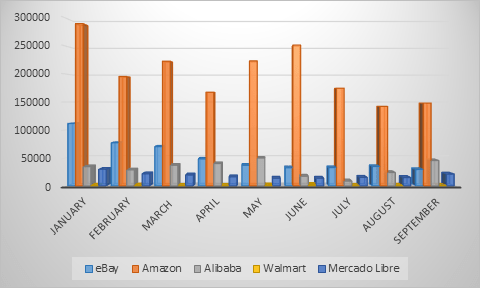Online payment fraud to increase by 208% amid the Black Friday season

In the run-up to Black Friday, there was an increase in phishing assaults that looked like e-payment pages. From September (627,560) to October 2021 (1,935,905), the overall number of financial phishing attacks disguised as e-payment systems more than doubled, representing a 208 percent rise. This and other discoveries are included in Kaspersky’s paper, ‘Black Friday 2021: How to Have a Scam-Free Shopping Day.’
The sales season draws the attention of both shoppers and retailers; nevertheless, it is also a favorite of hackers, who do not hesitate to take advantage of online shoppers by establishing phony pages that replicate the most popular retail platforms and e-payment systems.
During the first 10 months of 2021, Kaspersky products detected over 40 million phishing assaults aimed at e-commerce and e-shopping platforms, as well as financial institutions. While stores recovered in 2021 after a difficult 18 months and shoppers returned to offline shopping, Kaspersky researchers did not observe the typical seasonal trends for phishing related to online shopping, such as an increase in phishing pages with too good to be true sale offers or an increase in retail-related scams.
There is, however, one important exception. From September (627,560) to October (1,935,905) of 2021, the overall number of financial phishing attempts targeting e-payment systems more than doubled – a 208 percent rise. Indeed, due to their unparalleled simplicity, new payment systems have been introduced in a number of countries this year. As consumer use increased, fraudsters began to aggressively use such systems as a bait to transmit harmful activities.
The amount of spam letters discovered by Kaspersky’s tools has also increased. From October 27 to November 19, an aggressive spread of spam emails with 221 745 emails containing the phrase ‘Black Friday’ was seen during the month’s sales season.
Kaspersky researchers also investigated whether popular platforms were used as bait to disseminate phishing pages. When the overall amount of phishing attempts utilizing Amazon’s name was examined, the results revealed that Amazon was consistently the most common lure employed. eBay was the second most popular for the majority of 2021, followed by Alibaba and Mercado Libre.

During the Black Friday season, we always see an increase in scamming activities. Perhaps more unexpected is the focus on electronic payment systems. This time, we noticed a 208 percent increase in a number of assaults imitating the most common payment methods. Of course, scammers perceive each new payment application as a new opportunity to possibly exploit victims,” explains Tatyana Shcherbakova, a security expert at Kaspersky.
‘So, in order to protect your data and finances, make sure the online payment page is secure: you’ll know it is if the web page’s URL begins with HTTPS rather than HTTP and an image of a lock will typically display alongside the URL,’ Tatyana says.
Securelist.com has further information about Black Friday frauds and tactics.
To get the most out of Black Friday this year, keep the following safety tips in mind:
- Use a trustworthy security solution, such as Kaspersky Security Cloud, that detects dangerous attachments and prevents access to phishing websites — on both your PC and mobile device.
- Open attachments or click on links in emails from banks, e-payment apps, or retail platforms, even if the sender insists. It is preferable to go directly to the official website and log in to your account there.
- Before filling out any information, double-check the URL format and spelling of the firm name, as well as read reviews and check the domain’s registration data.
- Be skeptical of any deals that appear to be too good to be true — they almost always are.







